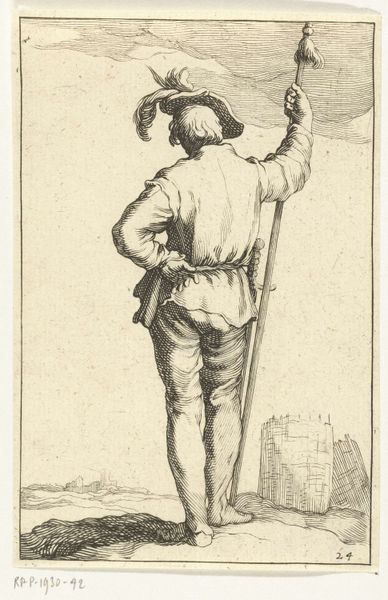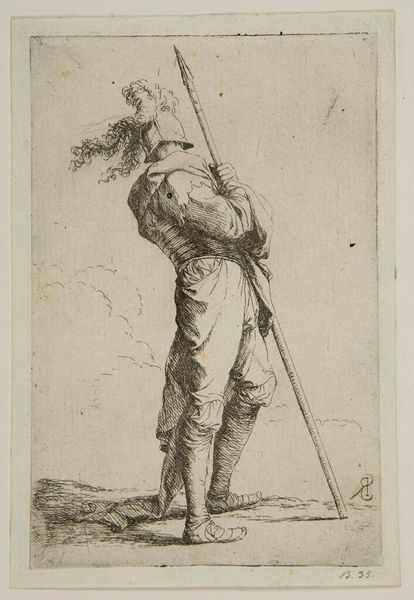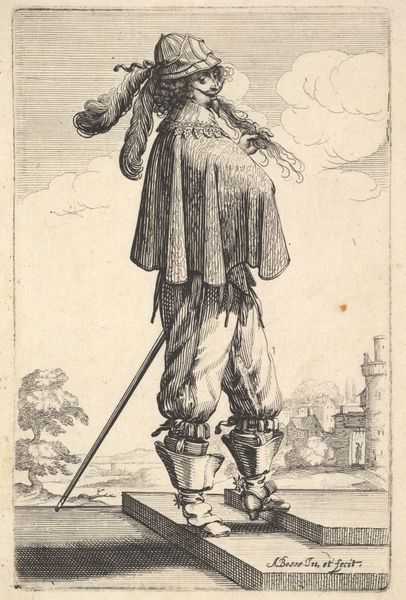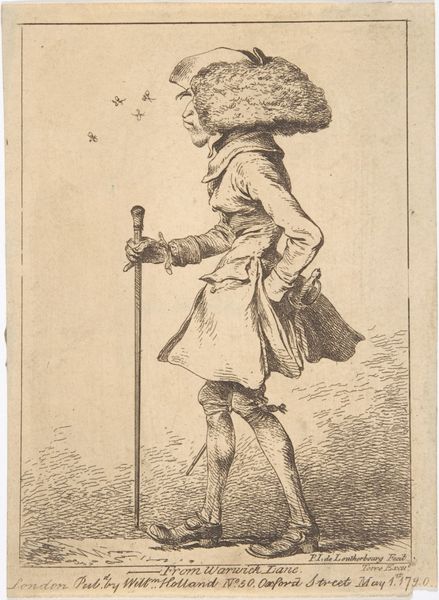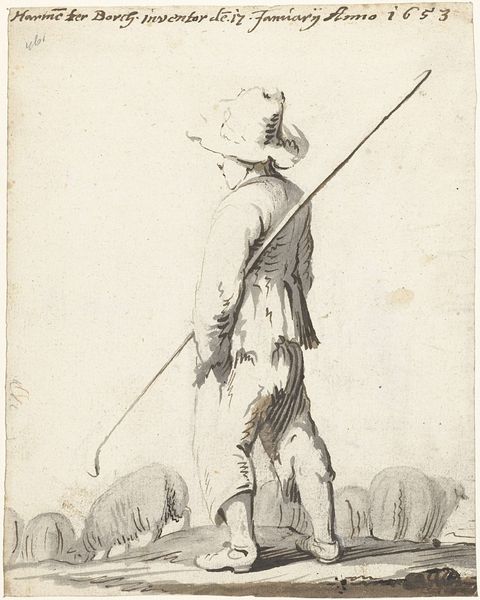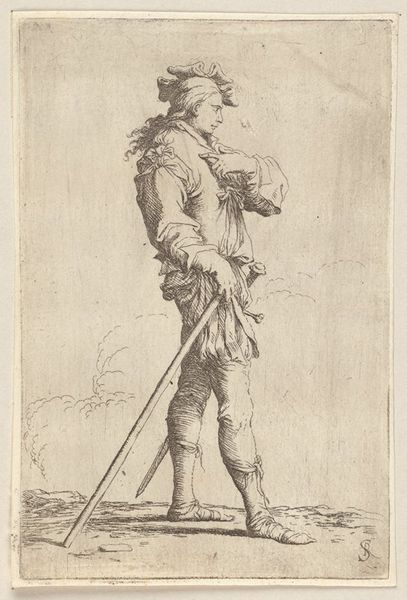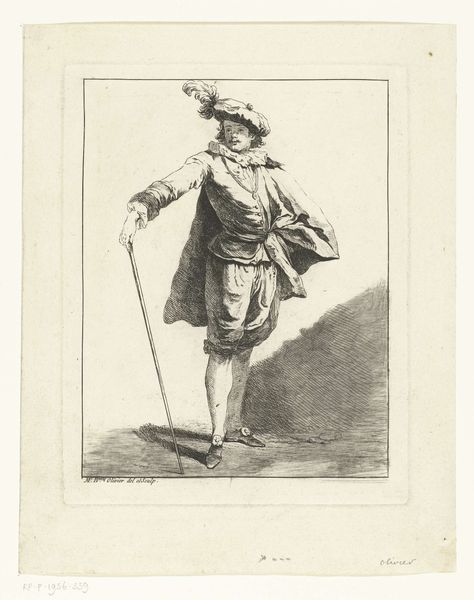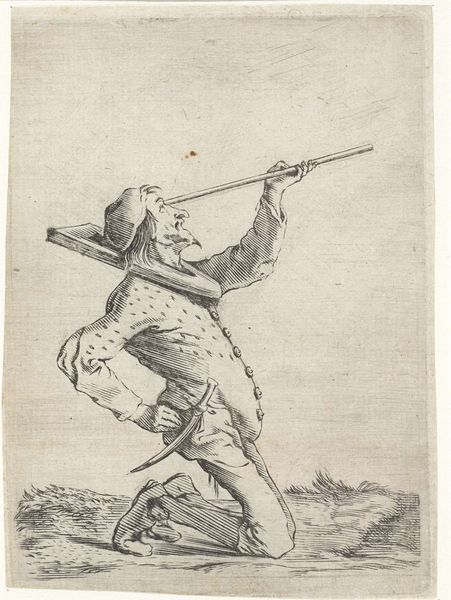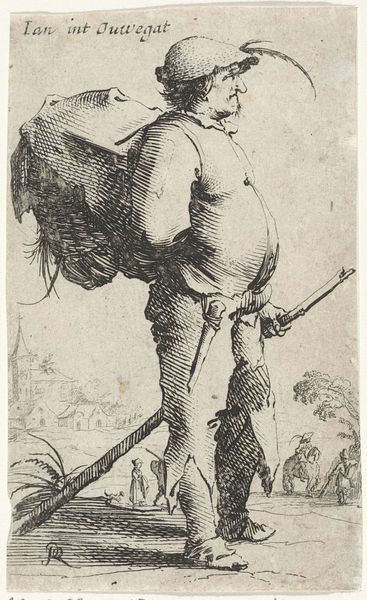
drawing, print, etching, ink, engraving
#
portrait
#
drawing
#
baroque
# print
#
etching
#
ink
#
genre-painting
#
engraving
Dimensions: height 120 mm, width 83 mm
Copyright: Rijks Museum: Open Domain
Editor: This is "Standing Soldier" by Willem Basse, likely made sometime between 1633 and 1672. It looks like an etching, very delicate, and shows a soldier with a rather nonchalant posture. The surrounding village seems equally peaceful. What do you see in this piece, what symbols jump out to you? Curator: The spear, the hat, the lace collar... these are not just decorative elements. They speak to the visual language of power and status in the Baroque era. Basse's soldier seems to consciously adopt this visual coding. Consider the swagger of his pose— what could that represent beyond just confidence? Editor: Perhaps a certain… awareness of his own importance, a self-fashioned image? The lace seems almost excessively elaborate, contrasting with the implied simplicity of a soldier’s life. Curator: Exactly. Think about the social upheaval happening during this period. Genre paintings, like this one, often depicted everyday life, but they also served as a kind of "mirror" reflecting societal tensions. The soldier, a symbol of protection and order, presented within a relaxed village backdrop creates a sense of... I want to say, *managed* anxiety. Almost as if he has already dealt with a war, or one will be starting soon. How might that tension manifest psychologically? Editor: So, the print might suggest a manufactured serenity, beneath which rests an understanding of life's fleetingness or anxiety relating to conflict? Curator: Precisely! It's about unveiling the layers of meaning within these seemingly simple images. Even a genre print such as this offers a deeper exploration of the Baroque mind. What a fascinating cultural artifact, no? Editor: I never thought to look at it that way before, recognizing the constructed reality it presents, very interesting indeed. Thank you.
Comments
No comments
Be the first to comment and join the conversation on the ultimate creative platform.
